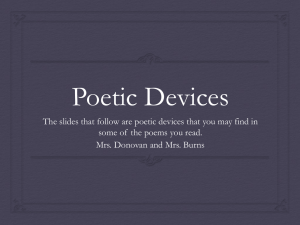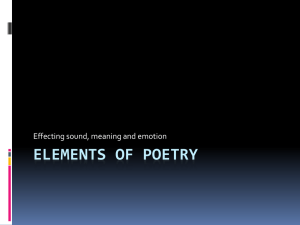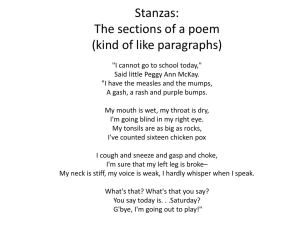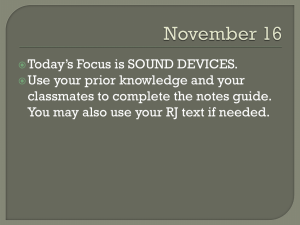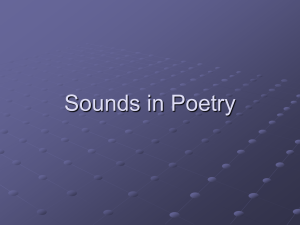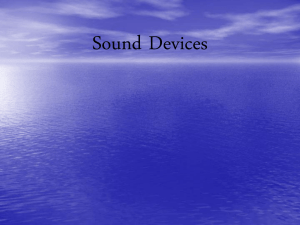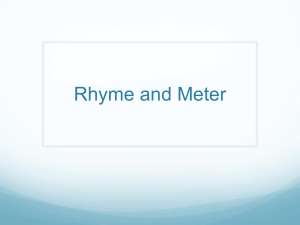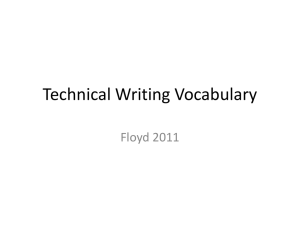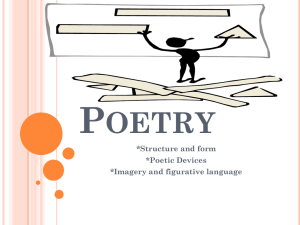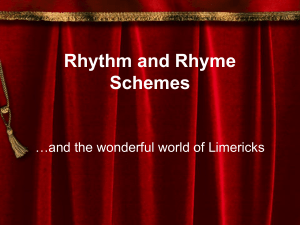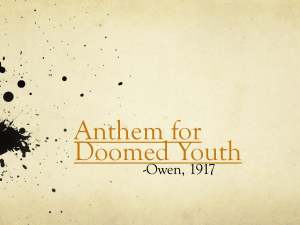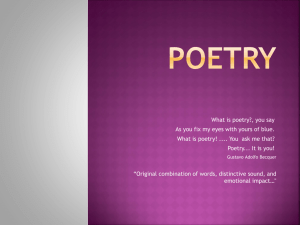Figurative Language
advertisement
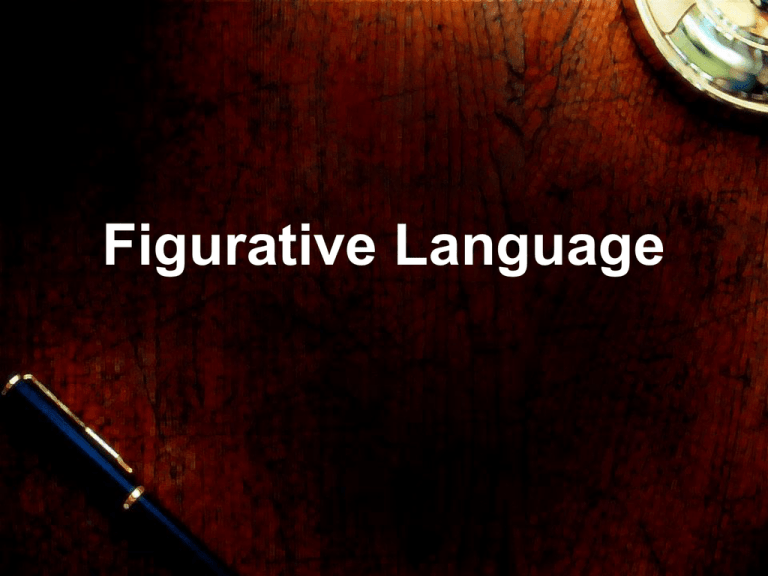
Figurative Language Figurative Language: • Is language or speech that contains images and is NOT intended to be interpreted in a literal sense • Describes something through unusual comparison for effect, interest, and to make things more clear • The most common figures of speech are simile, metaphor and alliteration Figures of Speech: Imagery: language that appeals to the senses. Descriptions of people, or objects stated in terms of our senses. Simile: a direct comparison between two unlike things, using the words like or as. Example: The muscles on his brawny arms are strong as iron bands. Figures of Speech: Metaphor: an implied comparison between two relatively unlike things using a form of the verb “to be”. The comparison does NOT use like or as. Example: The road was a ribbon of moonlight. Alliteration: repeated consonant sounds that occur at the beginning of words. It is used to create melody, establish mood, call attention to important words, and point out similarities and contrasts. Example: wide-eyed and wondering while we wait for others to wake Figures of Speech: Personification: gives the qualities of a person to an animal, an object, or an idea. Used to communicate a certain feeling or attitude, or to control the way a reader perceives it. Example: sometime too hot the eye of heaven shines. Onomatopoeia: the use of words to mimic sounds Example: Snap! Crackle! Pop! Figures of Speech: Hyperbole: An exaggerated statement used to enhance effect Example: She’s said so on several million occasions Idioms: language specific expressions Example: A little bird to me Achilles' Heel Jack of all trades Tables are turned Take your breath away Figures of Speech: Paradox: a statement or situation containing apparently contradictory or incompatible elements, but may actually be true. Example: green is gold Men work together whether they work together or apart Irony: an expression or situation used in opposition to what one would expect Example: the fire station burned down Rhyme: • • 1. Refers to the repetition of similar sounds occurring at regular intervals Example: Hey, diddle, diddle; The cat and the fiddle…. Five kinds of rhyme: End Rhyme: the duplication of sounds that takes place at the end of lines Example: Little Boy Blue, come blow your horn, The sheep’s in the meadow, the cow’s in the corn 2. Rhyme: Rhyme that occurs within a single line of poetry Example: Little Bo Peep has lost her sheep Rhyme cont. 3. Forced Rhyme: A rhyme that is created by mispronouncing words, or inventing words to make the rhyme work. Example: Farewell, Farewell, you old rhinoceros I’ll stare at something less prepocerous 4. Imperfect Rhyme: a rhyme between a stressed and unstressed syllable Example: wing and caring 5. Perfect Rhyme: final accented vowels of rhyming words are identical Example: sight and flight, sadness and madness Rhyme Scheme: • The pattern of rhymed words • Stanzas are often linked by their rhyme scheme • Written out in letter form Example: Humpty Dumpty sat on a wall Humpty Dumpty had a great fall All the king’s horses and all the king’s men Couldn’t put Humpty together again! Rhythm: a pattern in the beat of stresses in the stream of sound Tone: the expression of a literary speaker’s attitude Example: the tone can be happy, sad, reflective, etc. Couplet: a pair of rhymed lines
